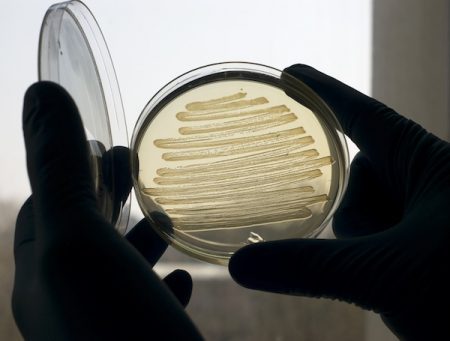February 7, 2017 – Scientists at The Scripps Research Institute (TSRI) announced they had created a stable semisynthetic organism in research appearing in the January 23, 2017 online version of the journal, Proceedings of the National Academy of Sciences. They synthesized a new version of DNA that added two new base pairs to the naturally occurring ones found in DNA. These are known as A for Adenine, C for Cytosine, G for Guanine and T for Thymine. The Scripps researchers named their new base pairs, X and Y.
What purpose can a semi-synthetic organism serve? The researchers believe that creating a synthetic single-celled organism will help in the development of new cures for disease impacting natural organisms like us.
The original research dates back to 2014 when the Scripps modified E. coli to hold two additional base pairs, but at the time they couldn’t successfully get the natural bacteria to replicate the DNA code change indefinitely. The X and Y kept getting dropped when the E. coli replicated.
Professor Floyd Romesberg of the Scripps states, “Your genome isn’t just stable for a day….Your genome has to be stable for the scale of your lifetime. If the semisynthetic organism is going to really be an organism, it has to be able to stably maintain that information.” Getting a single-celled organism to retain artificial base pairs, therefore, presented a challenge. That meant experimenting with different enzymes that the organisms recognized as compatible. Then the researchers used CRISPR-Cas9, the genome-editing tool.
Using CRISPR-Cas9 They modified the bacteria to accept the X and Y base pairs as natural constituents of the genome, rejecting any occurrence where the X and Y didn’t occur. That meant any cells that replicated without the X and Y were seen as foreign and marked for destruction. That left only organisms with 6 base pairs, a new normal, which continued to replicate through 60 divisions without dropping the synthetic additions. States Romesberg, “That suggests that all of life processes can be subject to manipulation.”
The researchers now plan to study how they can manipulate the genetic code of RNA. RNA in cells receives instructions from DNA and executes them to maintain life.
Inevitably, by adding new base pairs to DNA, we may see applications that include biological computing. Why? Because new base pairs mean more information can be stored in DNA. So why stop at just 6?










